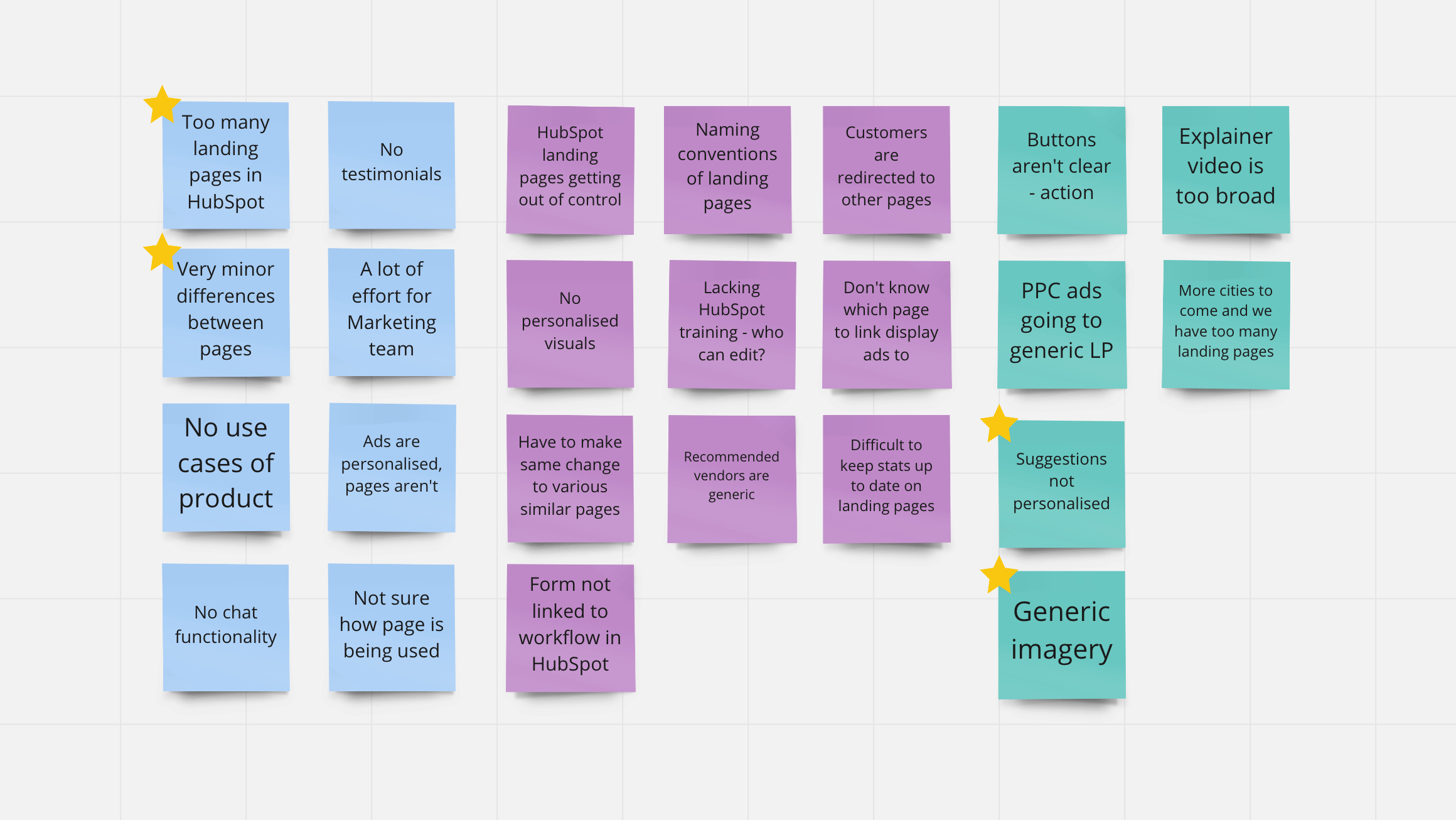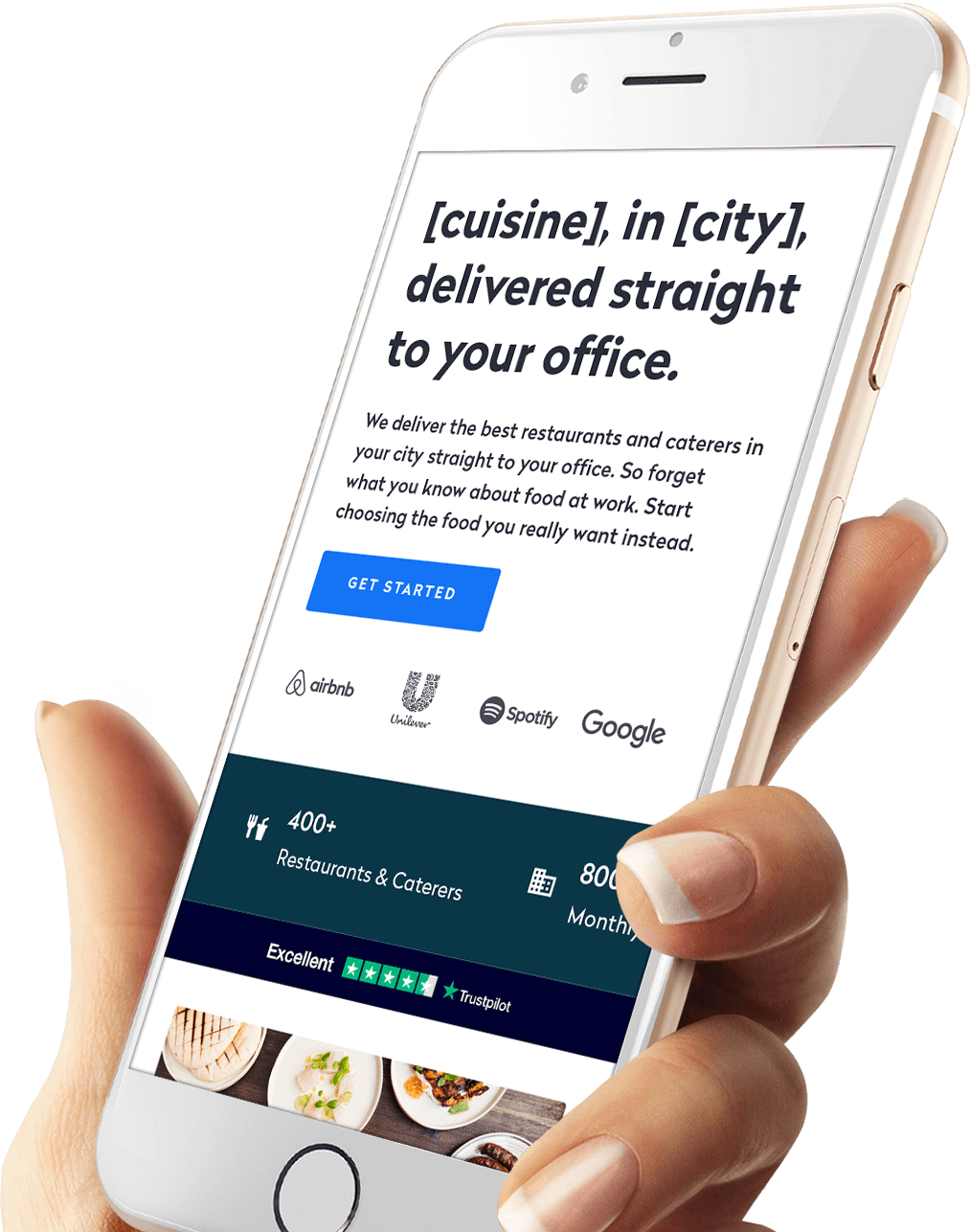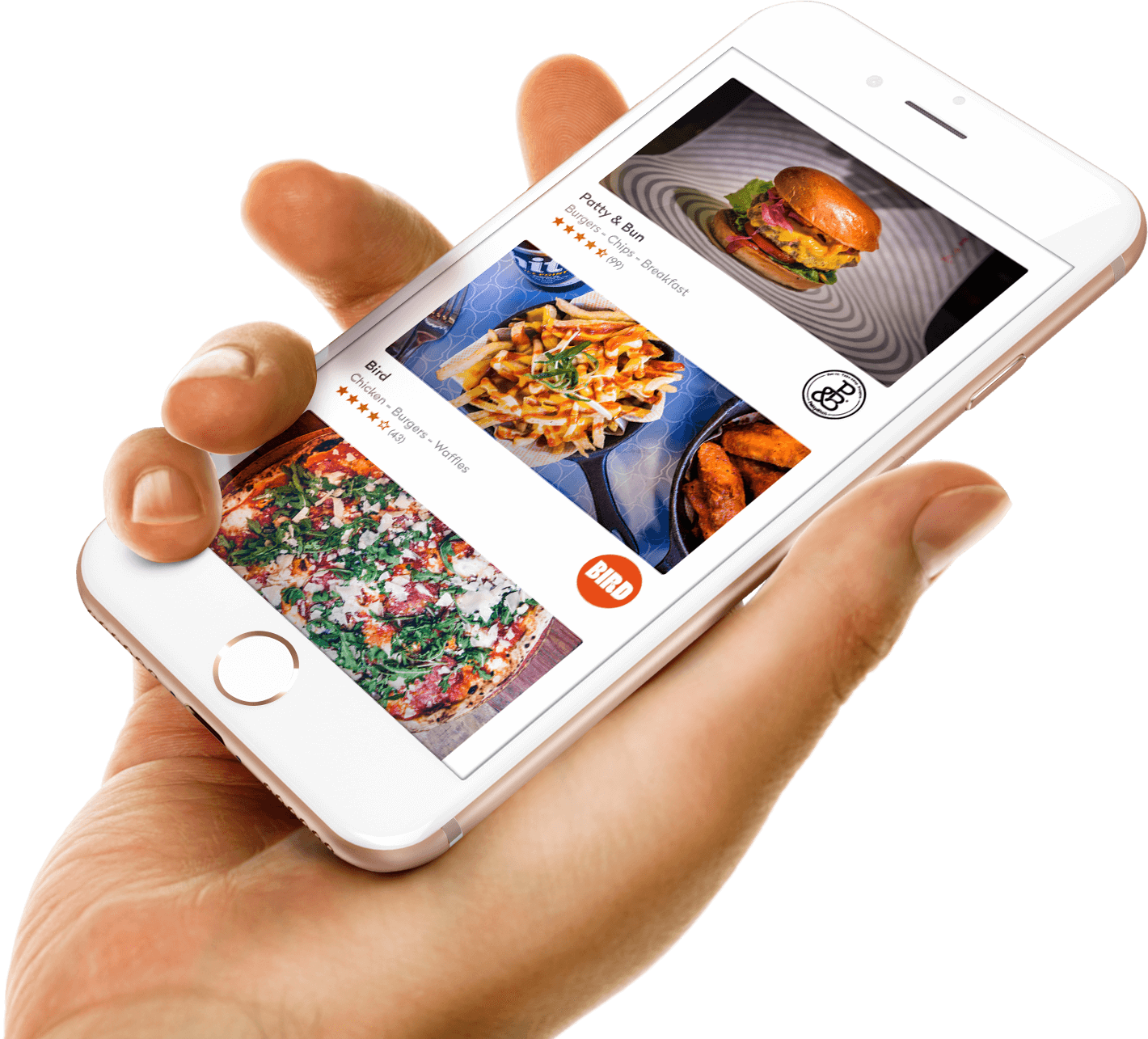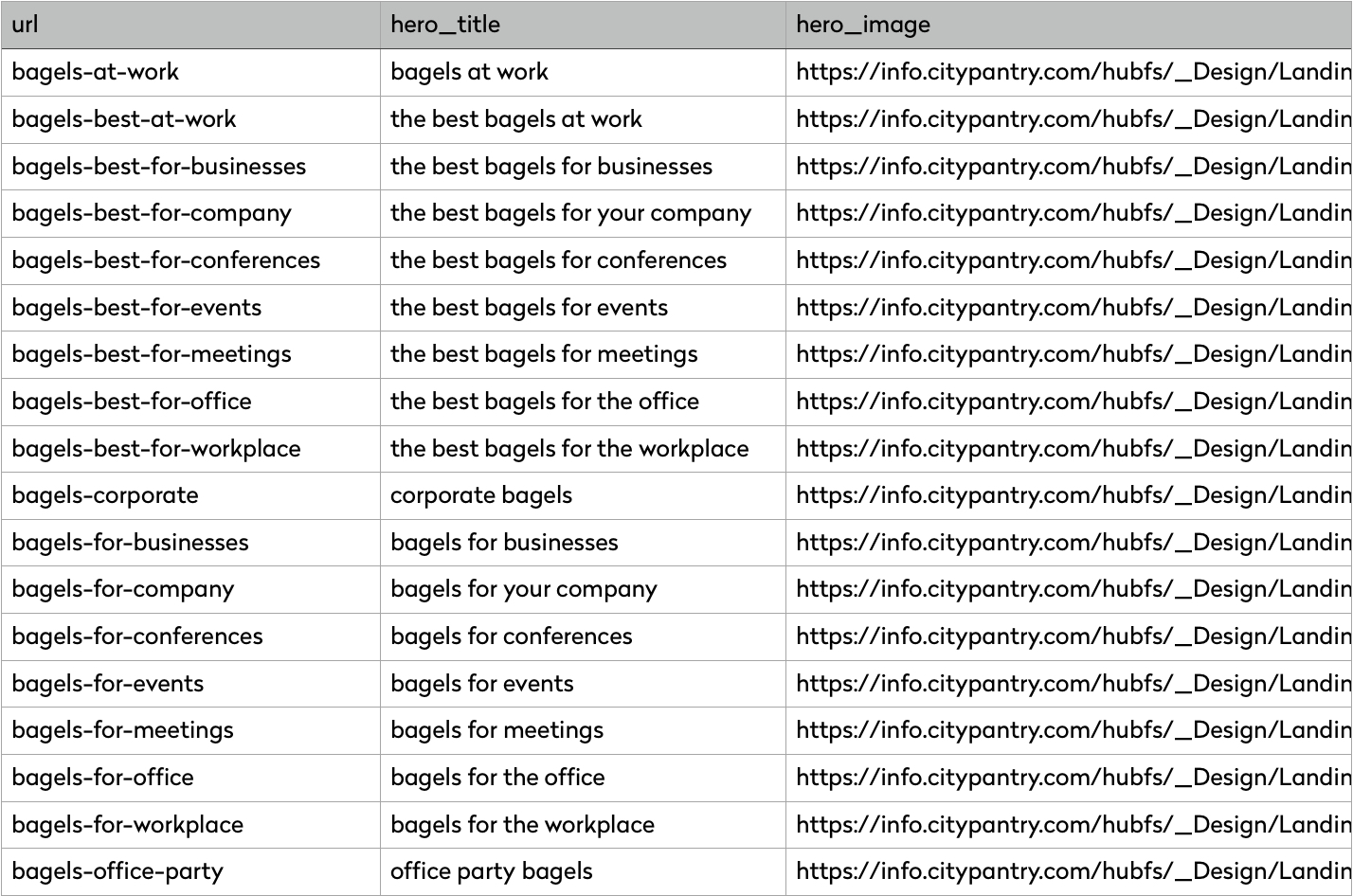Personalised Landing Pages at Scale — Just Eat for Business
Discovery / Design / Development / Data Import
In 2019, Just Eat for Business experienced a phase of rapid growth. Having previously operated solely in London - Just Eat for Business were now offering corporate catering to a total of 8 cities across the UK with various other cities forecasted to be added to the offering in the months.
Due to the expansion, we rapidly expanded the range of PPC keywords that we were bidding on. We were now targetting a total of 760 keywords and phrases across 8 different cities.
With 6000+ different combinations of PPC adverts across various platforms but only 20 variations of landing pages to link the adverts to, the Marketing team were forced to send customers to generic landing pages that weren't personalised to the advert that the customer had engaged with.
Our solution was to ensure that customers clicking any one of our 6000+ PPC adverts were served a landing page that mirrored the information they had seen on the ad.
4.74%
Increase in form submissions
85%
Increased average time on page



Ideation / Design
Having discovered that three colleagues in the Marketing team had been working with Just Eat for Business throughout some of its key growth years; I arranged a whiteboarding session seeking to understand the existing pain points.
It was clear from this meeting that the team were aware of the value of a personalised proposition but didn’t have access to a solution.

"As a consumer whom has clicked a PPC advert and landed on a Just Eat for Business landing page, I want to be shown recommendations that are local to me so that I know I can offer my teams the food being advertised"




